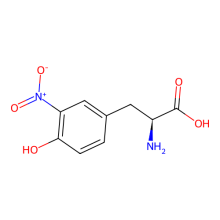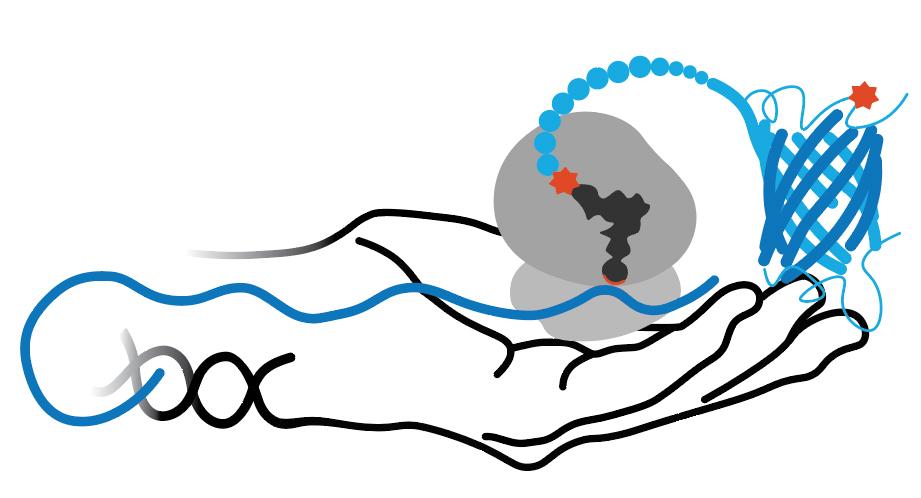RS/tRNA Foundational Publication Support
Cooley, Richard B, Jessica L Feldman, Camden M Driggers, Taylor A Bundy, Audrey L Stokes, Andrew Karplus, and Ryan A Mehl. (2014) 2014. “Structural Basis Of Improved Second-Generation 3-Nitro-Tyrosine Trna Synthetases.”. Biochemistry 53 (12): 1916-24. doi:10.1021/bi5001239.
Rauch, Benjamin J, Joseph J Porter, Ryan A Mehl, and John J Perona. (2016) 2016. “Improved Incorporation Of Noncanonical Amino Acids By An Engineered Trna(Tyr) Suppressor.”. Biochemistry 55 (3): 618-28. doi:10.1021/acs.biochem.5b01185.
RS/tRNA Usage Publications
Franco, Maria, Yaozu Ye, Christian A Refakis, Jessica L Feldman, Audrey L Stokes, Manuela Basso, Raquel de Mera, et al. (2013) 2013. “Nitration Of Hsp90 Induces Cell Death.”. Proceedings Of The National Academy Of Sciences Of The United States Of America 110 (12): E1102-11. doi:10.1073/pnas.1215177110.
Franco, Maria. (2015) 2015. “Nitration Of Hsp90 On Tyrosine 33 Regulates Mitochondrial Metabolism.”. The Journal Of Biological Chemistry 290 (31): 19055-66. doi:10.1074/jbc.M115.663278.
Gerding, Hanne, Christiaan Karreman, Andreas Daiber, Johannes Delp, Daniel Hammler, Martin Mex, Stefan Schildknecht, and Marcel Leist. (2019) 2019. “Reductive Modification Of Genetically Encoded 3-Nitrotyrosine Sites In Alpha Synuclein Expressed In E.coli.”. Redox Biology 26: 101251. doi:10.1016/j.redox.2019.101251.
DiDonato, Joseph A, Kulwant Aulak, Ying Huang, Matthew Wagner, Gary Gerstenecker, Celalettin Topbas, Valentin Gogonea, et al. (2014) 2014. “Site-Specific Nitration Of Apolipoprotein A-I At Tyrosine 166 Is Both Abundant Within Human Atherosclerotic Plaque And Dysfunctional.”. The Journal Of Biological Chemistry 289 (15): 10276-10292. doi:10.1074/jbc.M114.556506.
Zheng, Zhaopeng, Xuzhen Guo, Minling Yu, Xiaoyan Wang, Hongguang Lu, Fahui Li, and Jiangyun Wang. (2020) 2020. “Identification Of Human Ido1 Enzyme Activity By Using Genetically Encoded Nitrotyrosine.”. Chembiochem : A European Journal Of Chemical Biology 21 (11): 1593-1596. doi:10.1002/cbic.201900735.
Jandy, Megan, Asra Noor, Pascal Nelson, Cassandra Dennys, Isabella Karabinas, Jeanine Pestoni, Gautam Singh, et al. (2022) 2022. “Peroxynitrite Nitration Of Tyr 56 In Hsp90 Induces Pc12 Cell Death Through P2X7R-Dependent Pten Activation.”. Redox Biology 50: 102247. doi:10.1016/j.redox.2022.102247.
Logan, Isabelle, Kyle T Nguyen, Tilottama Chatterjee, Bhagyashree Manivannan, Ngozi Paul, Sharon Kim, Evelyn Sixta, et al. (2024) 2024. “Selective Nitration Of Hsp90 Acts As A Metabolic Switch Promoting Tumor Cell Proliferation.”. Redox Biology 75: 103249. doi:10.1016/j.redox.2024.103249.
Porter, Joseph J, Hyo Sang Jang, Mohammad Mahfuzul Haque, Dennis J Stuehr, and Ryan A Mehl. (2020) 2020. “Tyrosine Nitration On Calmodulin Enhances Calcium-Dependent Association And Activation Of Nitric-Oxide Synthase.”. The Journal Of Biological Chemistry 295 (8): 2203-2211. doi:10.1074/jbc.RA119.010999.
RS/tRNA Pair Development Year
2014
ncAA(s) Incorporated
3-nitro-L-tyrosine
ncAA Structure (png, jpg, jpeg)

ncAA Utility
3-nitroTyr is a natural post-translational modification of proteins typically resulting from protein oxidation by peroxynitrite. It increases in many diseases and with age. Still unknown is if it can be reversed (by a denitrase) and if it has has a purposeful signaling role, or if it is only a modification associated with pathologies. It is known in some cases to contribute to disease pathology, but in most cases it is unknown how much it causes pathology vs. being a consequence of pathology. The ability to site specifically and quantitatively place 3-nitroTyr in positions in proteins that have been seen to occur in association with disease is a key tool to answer questions about its possible roles in normal physiology and disease.
RS Organism of Origin
Parent RS
RS Mutations
Y32H
H70C
D158S
I159A
L162R
H70C
D158S
I159A
L162R
tRNA Organism of Origin
Parent tRNA
tRNA Anticodon
CUA
Other tRNA Mutations
C17A
U17aG
U20C
G37A
U47G
U17aG
U20C
G37A
U47G
Multiple tRNAs?
2016 paper showed that for this RS and also other MjTyr ncAA RSs, a tRNA having the CUA anticodon with only G37A as an additional mutation actually performed better than did the orthogonal tRNA containing the full set of 5 additional mutations listed above.
RS/tRNA Availability
RS and tRNA available as Addgene Plasmid #85498
RS/tRNA Additional Notes
About 10x more efficient than the first generation 3-nitroTyr RS, yielding high fidelity incorporation into sfGFP(150) using 1 mM ncAA with a yield of ~175 mg/L, representing about a 20% efficiency (relative to WT-sfGFP). Also yielded high fidelity incorporation into multiple sites in HSP90.
Crystal structures of the 5B 3-nitroTyr RS are available (PDB IDs: 4NDA, 4ND6 and 4ND7)
Crystal structures of the 5B 3-nitroTyr RS are available (PDB IDs: 4NDA, 4ND6 and 4ND7)
